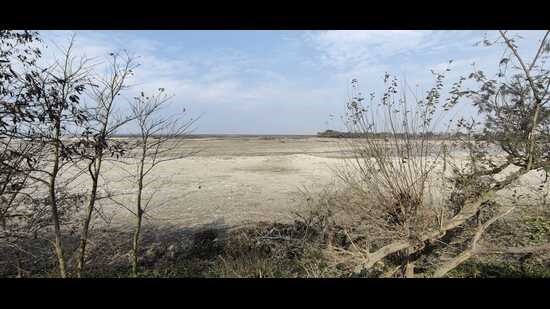Description

Disclaimer: Copyright infringement not intended.
Context: Uttar Pradesh irrigation department drained out the Haiderpur wetland, forcing tens of thousands of migratory birds to leave the most prominent migratory bird nesting site in western Uttar Pradesh.
Details:
- The draining out was done under pressure from farmers who complained of water logging in their fields due to high groundwater level.
About:
- Haiderpur wetland is a Ramsar site, a wetland of international importance, on the border of Muzaffarnagar and Bijnor districts in Uttar Pradesh.
- Ramsar sites come under wetland rules, 2017, which calls for maintaining the ecological integrity of a wetland.
- Key to a wetland is water, but also wetland vegetation.
- While wetlands can be temporarily dry, depending on factors like rainfall, intentionally draining them of water is against the core value of the wetland rules.
- This human-made wetland was formed in 1984 by the construction of the Madhya Ganga Barrage on a floodplain of the River Ganga. It is located within the boundaries of Hastinapur Wildlife Sanctuary.
- Administrative region: Uttar Pradesh
- National legal designation: Wildlife Sanctuary - Hastinapur Wildlife Sanctuary
- Area: 6,908 ha
- Designation date: 13-04-2021

Species:
- Haiderpur Wetland provides habitat for numerous animal and plant species, including more than 30 species of plants, over 300 species of birds including 102 waterbirds, more than 40 fish and more than ten mammal species.
- This diverse habitat supports more than 15 globally threatened species, such as the critically endangered gharial (Gavialis gangeticus) and the endangered hog deer (Axis porcinus),black-bellied tern (Sterna acuticauda), steppe eagle (Aquila nipalensis), Indian skimmer (Rynchops albicollis) and gold mahseer (Tor putitora).
- The Site supports more than 25,000 waterbirds, serves as a breeding site for the near-threatened Indian grassbird (Graminicola bengalensis) and provides refuge to the northern subspecies population of the vulnerable swamp deer (Rucervus duvaucelii) during its seasonal flood-driven migration.
- The Site also regularly supports more than 1% of the population of greylag goose (Anser anser)and bar-headed goose (Anser indicus).
- Haiderpur Wetland also helps to support the livelihoods of the local communities, and contributes to the maintenance of hydrological regimes and to hazard reduction.
- It is used for recreation and tourism, and scientific and educational activities are also associated with the Site.


https://www.hindustantimes.com/india-news/govt-steps-in-to-stop-haiderpur-wetland-s-dewatering-101674412169330.html












